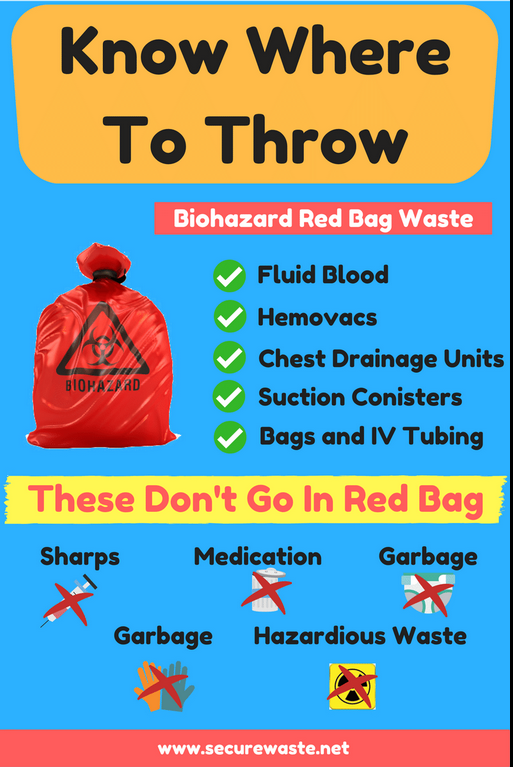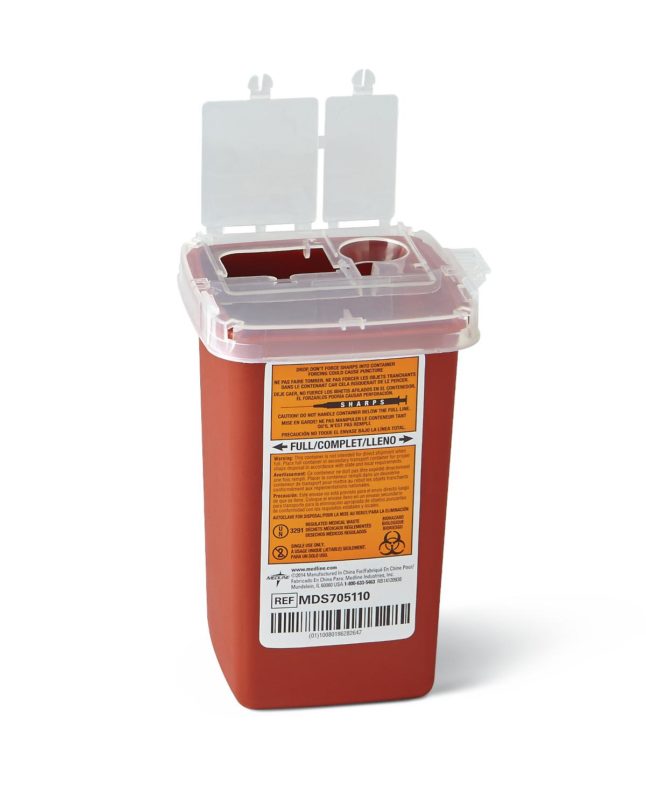Safety First: Your Guide to Responsible Medical Waste Removal Services
Safety First: Your Guide to Responsible Medical Waste Removal Services
Blog Article
Minimize Expenses and Make The Most Of Security: Effective Medical Waste Disposal Methods
Reliable clinical garbage disposal approaches are critical for medical care centers to maximize and reduce expenses safety. With the growing concern for ecological sustainability and the raising variety of guidelines surrounding waste management, it is imperative for medical care companies to adopt efficient and certified techniques. By carrying out appropriate partition and classification, efficient product packaging and labeling, risk-free transportation and handling, reliable treatment and disposal methods, and conformity with governing standards, health care centers can make sure the responsible and risk-free management of clinical waste. In this discussion, we will certainly explore each of these approaches in information, providing understandings and practical pointers for healthcare specialists to optimize their garbage disposal procedures.

Proper Segregation and Categorization
Appropriate partition and classification are crucial components of efficient medical garbage disposal methods, making certain the safety of healthcare workers, the public, and the environment - medical waste removal services. medical waste disposal services with WasteX. By separating various kinds of medical waste at the point of generation, medical care centers can reduce the risk of cross-contamination and possible damage to environments and individuals
Among the crucial elements in correct partition is the identification and category of medical waste. This entails categorizing waste right into different teams, such as contagious, hazardous, contaminated, or pharmaceutical waste. Each category calls for particular handling, storage space, and disposal techniques to prevent any type of damaging effects on human wellness and the atmosphere.
In addition, appropriate partition also consists of using color-coded tags and containers to clearly recognize and distinguish the numerous sorts of medical waste. This aids healthcare workers and waste monitoring personnel to quickly recognize and deal with the waste suitably. For example, red containers might be utilized for infectious waste, while yellow containers might be designated for unsafe waste.
In enhancement to segregation, appropriate classification also includes the right product packaging and containment of medical waste. This makes sure that waste is firmly stored and carried without posturing any risks to individuals or the atmosphere. Utilizing puncture-resistant and watertight containers, along with properly sealing and labeling them, assists to stop any kind of accidental exposure or launch of unsafe materials.
Reliable Product Packaging and Labeling
Efficient product packaging and labeling play a crucial role in guaranteeing the effective and safe disposal of medical waste. Proper packaging is vital to prevent leakage, damage, or splilling throughout transportation and handling. It helps to reduce the risk of contamination and protects medical care employees, waste monitoring workers, and the atmosphere from potential hazards.
Clinical waste must be packaged in strong and leak-proof containers that are immune to pierce and breakage. These containers should be effectively secured to avoid any leak. In addition, the product packaging ought to be able to withstand the problems of transportation, including temperature variants and harsh handling.
Identifying is equally vital as it supplies essential details regarding the contents of the waste and any kind of prospective risks linked with it. The tags ought to consist of the name of the health care facility, the kind of waste, and any type of unique handling directions. Standard and clear labeling guarantees that waste monitoring workers can conveniently determine and handle the waste properly.
Efficient product packaging and labeling also aid in the correct segregation and classification of medical waste. Clear labeling permits easy recognition of different waste streams, such as transmittable waste, sharps, or pharmaceutical waste. This assists in streamlining the disposal process and making certain that the waste is treated or gotten rid of based on regulatory standards.
Safe Transportation and Handling
Guaranteeing the secure transportation and handling of medical waste is of utmost value in order to prevent any type of possible health and wellness and environmental dangers. Medical waste, such as sharps, contaminated materials, and pharmaceutical waste, need to be properly packaged and dealt with to decrease the risk of exposure to dangerous substances and pathogens.
Carrying clinical waste calls for compliance with strict policies and guidelines established by neighborhood authorities and ecological firms. These policies aim to secure the health and wellness of employees associated with waste monitoring and prevent the release of hazardous materials into the atmosphere.
To make certain risk-free transportation, clinical waste must be put in puncture-resistant and watertight containers check my reference that are appropriately sealed This Site and classified. Furthermore, it is essential to use customized cars equipped with ideal security features to deliver medical waste. medical waste disposal services with WasteX.
Managing clinical waste also needs correct training and adherence to safety procedures. Employees associated with the handling of medical waste must put on appropriate personal protective devices (PPE) such as masks, gloves, and gowns to lessen the threat of direct exposure. They should also comply with stringent health techniques to protect against the spread of infections and guarantee the risk-free disposal of waste.
Reliable Therapy and Disposal Approaches
Implementing appropriate treatment and disposal methods is essential in handling clinical waste successfully and lessening possible wellness and ecological threats. Clinical waste, that includes sharps, infectious materials, chemicals, and drugs, can pose substantial threats otherwise taken care of and gotten rid of appropriately. There are a number of treatment and disposal approaches readily available that comply with regulatory guidelines and promote secure practices.
One usual method is incineration, which includes shedding the waste at heats. Incineration is efficient in destroying pathogens and minimizing the quantity of waste, but it can release damaging contaminants into the air if not correctly managed. It is vital to make use of modern-day burners furnished with discharge control technologies.
An additional technique is autoclaving, which utilizes heavy steam and pressure to sterilize the waste. Autoclaving works in eliminating virus and minimizing the volume of waste, but it requires mindful surveillance and maintenance to guarantee proper performance. The decontaminated waste can after that be safely disposed of in a landfill.
Chemical therapy is one more option, which entails utilizing disinfectants or various other chemicals to reduce the effects of pathogens. This approach is frequently utilized for fluid waste, such as lab specimens. Nonetheless, it is very important to use check my source ideal chemicals and comply with proper treatments to guarantee reliable treatment and prevent ecological contamination.

Conformity With Regulatory Guidelines
Following regulatory standards is important in making certain proper conformity with clinical waste disposal methods. These standards are established to protect public health and wellness, prevent environmental contamination, and keep workplace security. Conformity with governing guidelines is vital for healthcare facilities, as non-compliance can lead to fines, fines, and reputational damage.
Regulative standards outline the proper handling, storage, transport, and disposal of clinical waste. They provide particular guidelines on product packaging requirements, labeling, and record-keeping. These guidelines likewise attend to the partition of various waste streams, such as sharps, infectious waste, and pharmaceutical waste. Healthcare facilities should make sure that their waste monitoring techniques straighten with these standards to minimize the risk of exposure to dangerous materials and avoid the spread of infections.
To preserve compliance, healthcare facilities should establish thorough waste monitoring programs that consist of personnel training, regular audits, and recurring surveillance. It is vital to keep updated with any kind of adjustments or updates to regulative guidelines, as practices might advance with time. By remaining notified and executing proper methods, medical care facilities can decrease the potential for governing infractions and safeguard the health and safety and security of their personnel, clients, and the surrounding area.
Final Thought
Finally, implementing reliable medical waste disposal approaches is vital for reducing costs and maximizing safety and security. Proper partition and classification, effective packaging and labeling, risk-free transportation and handling, and efficient therapy and disposal techniques are essential actions to ensure conformity with regulatory guidelines. medical waste removal service. By sticking to these techniques, medical care facilities can secure the environment and public health and wellness while additionally decreasing economic burdens connected with clinical waste management
By carrying out proper segregation and classification, reliable packaging and labeling, risk-free transport and handling, effective treatment and disposal techniques, and conformity with regulatory guidelines, health care centers can ensure the liable and secure management of medical waste. Red containers may be made use of for transmittable waste, while yellow containers may be designated for dangerous waste.
Clear and standard labeling ensures that waste management personnel can quickly determine and take care of the waste suitably. (medical waste disposal services with WasteX)
Clear labeling allows for easy recognition of various waste streams, such as contagious waste, sharps, or pharmaceutical waste. These guidelines additionally resolve the partition of different waste streams, such as sharps, transmittable waste, and pharmaceutical waste.
Report this page